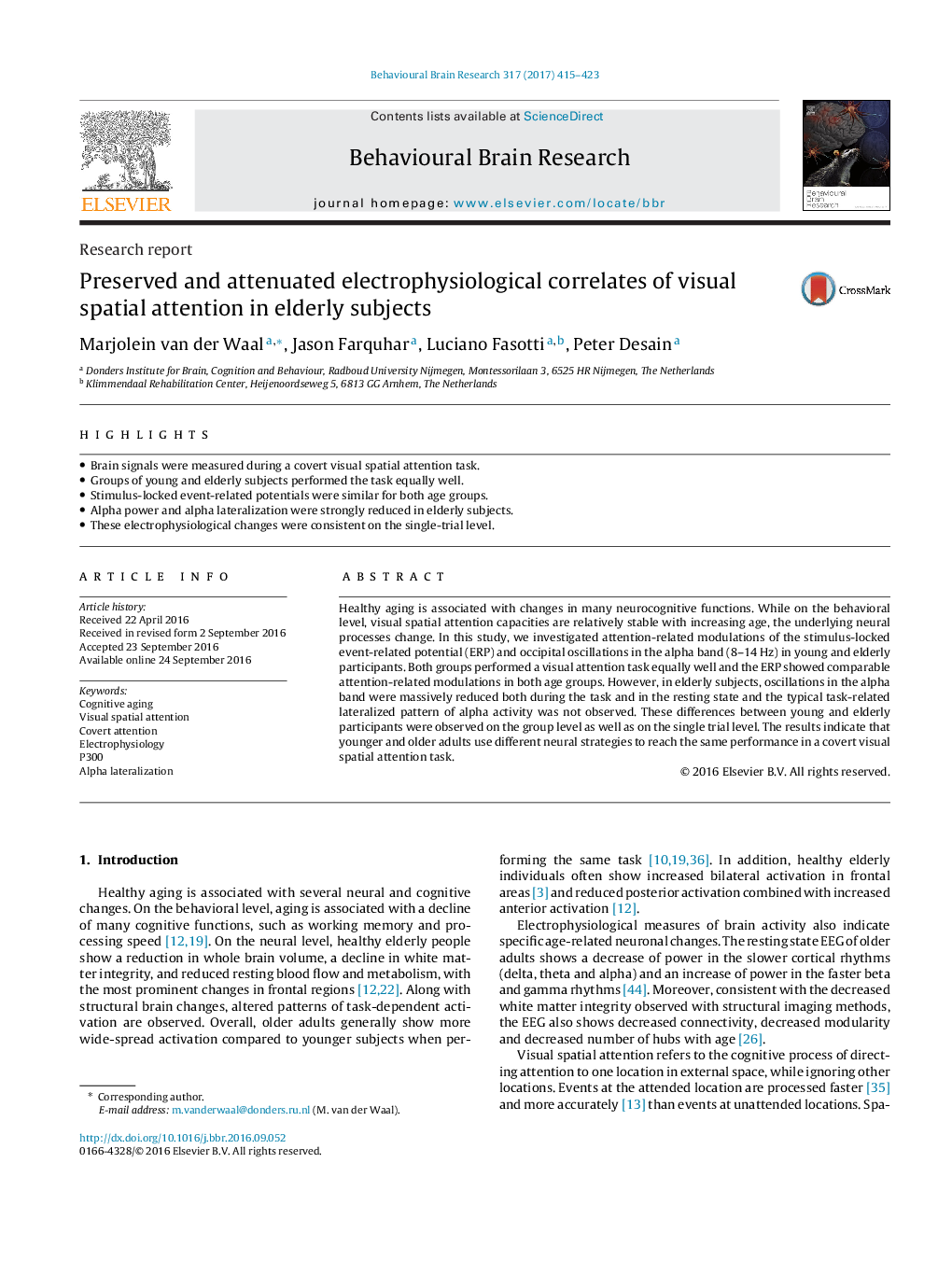| Article ID | Journal | Published Year | Pages | File Type |
|---|---|---|---|---|
| 4311980 | Behavioural Brain Research | 2017 | 9 Pages |
•Brain signals were measured during a covert visual spatial attention task.•Groups of young and elderly subjects performed the task equally well.•Stimulus-locked event-related potentials were similar for both age groups.•Alpha power and alpha lateralization were strongly reduced in elderly subjects.•These electrophysiological changes were consistent on the single-trial level.
Healthy aging is associated with changes in many neurocognitive functions. While on the behavioral level, visual spatial attention capacities are relatively stable with increasing age, the underlying neural processes change. In this study, we investigated attention-related modulations of the stimulus-locked event-related potential (ERP) and occipital oscillations in the alpha band (8–14 Hz) in young and elderly participants. Both groups performed a visual attention task equally well and the ERP showed comparable attention-related modulations in both age groups. However, in elderly subjects, oscillations in the alpha band were massively reduced both during the task and in the resting state and the typical task-related lateralized pattern of alpha activity was not observed. These differences between young and elderly participants were observed on the group level as well as on the single trial level. The results indicate that younger and older adults use different neural strategies to reach the same performance in a covert visual spatial attention task.
